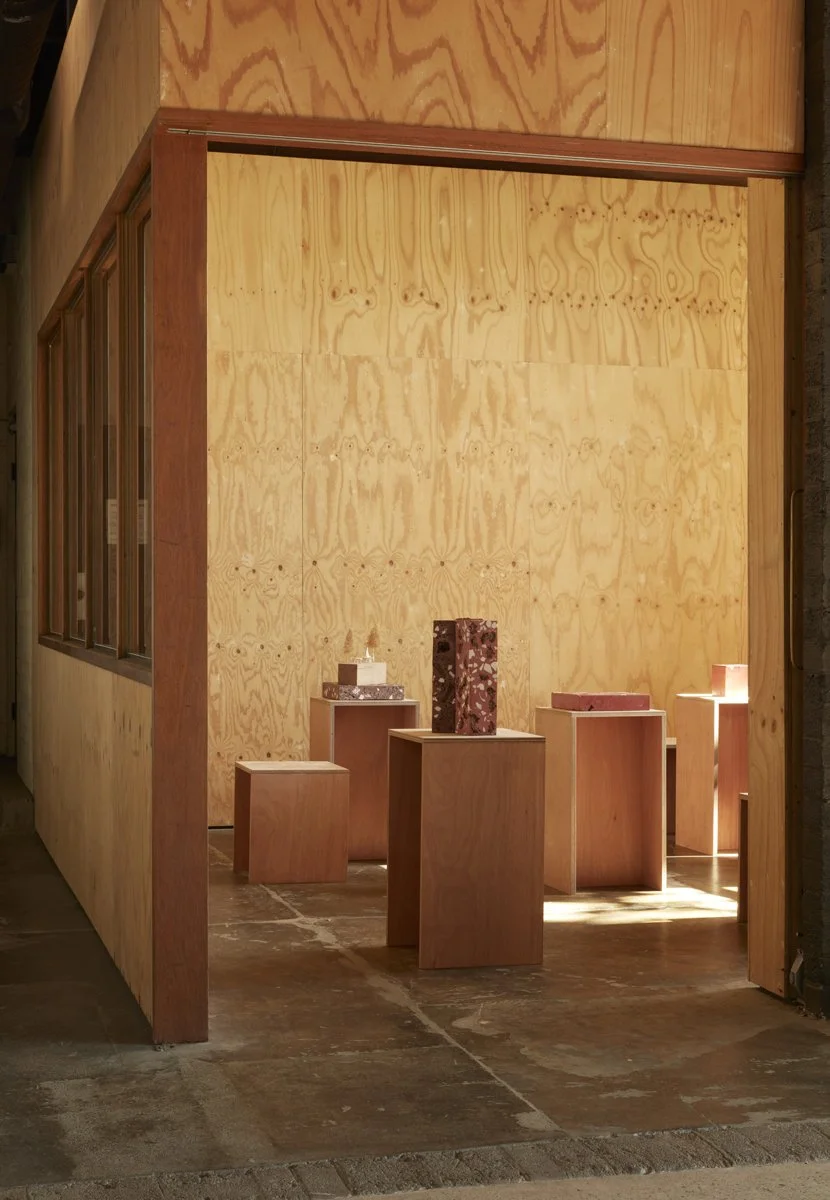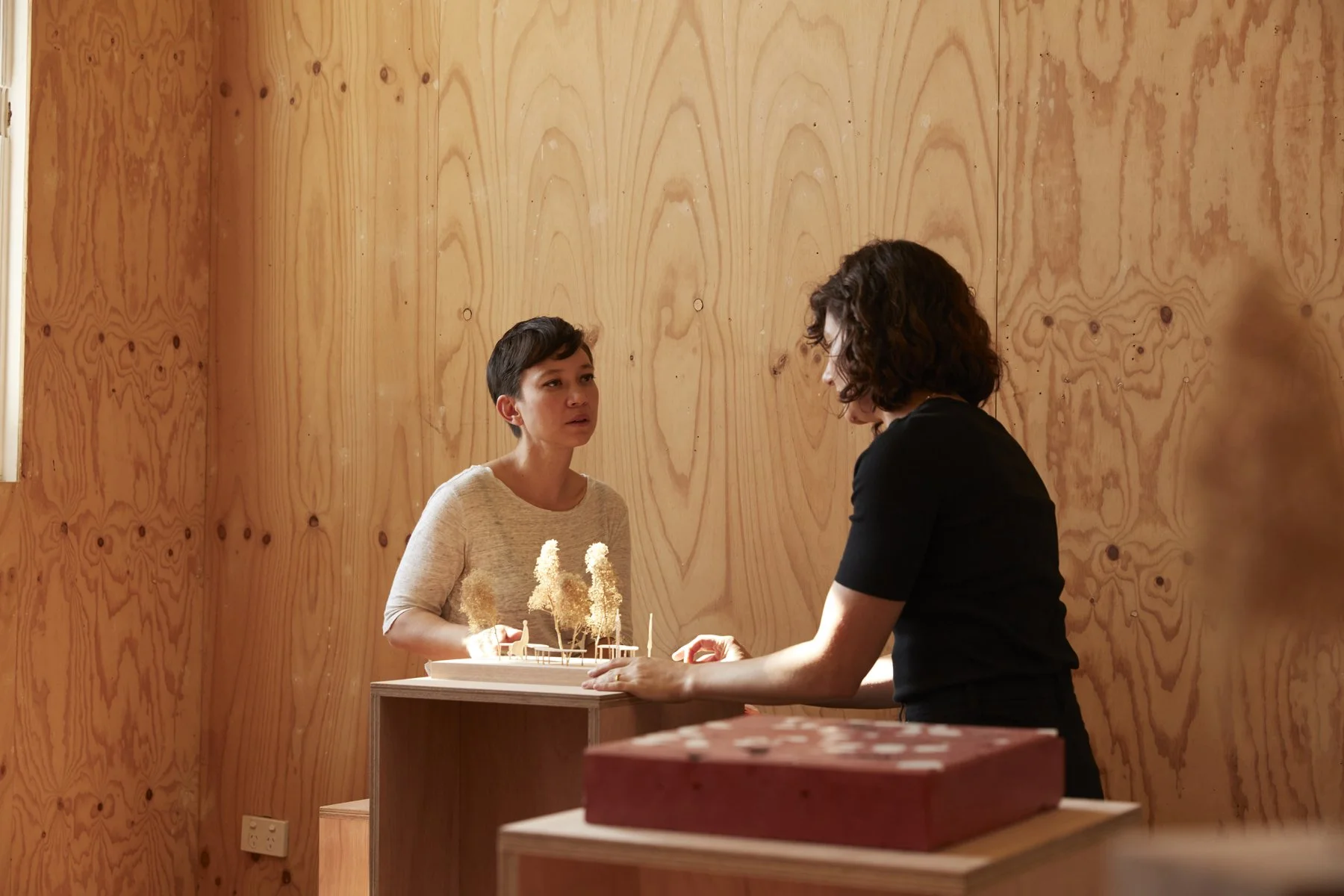Ideas Platform Artspace Sydney
Lauren Brincat and Aileen Sage Architects
You Me, Here Now
30 Apr – 16 May 2021
We want to reconnect people. Strangers. The city. Start a conversation with each other and with others about this place.
You Me, Here Now is an ongoing conversation between artist Lauren Brincat and Aileen Sage Architects (Isabelle Aileen Toland and Amelia Sage Holliday). The exhibition asks questions about how we come together, how we sit together and aims to explore alternative modes of learning within exhibition and seminar formats.
Only three per cent of the original Eastern Suburbs Banksia Scrub remains in the local area. It is an endangered and threatened species. The exhibition considers contemporary society's loss of connection to nature and community. In this space we invite the audience to sit and immerse themselves in that which is often overlooked.
How do we connect and engage with the place around us? Are we engaged with the public spaces that we function within? How do we connect people to place? The social and ecological projects of connection are crucial to a thriving and involved community. People care more for a place if they have a connection to it.
After spending a year in Mexico, Brincat fell in love with public seating called Tu y Yo, meaning You and I. She admired the way the seat’s shape encouraged eye-to-eye contact. With Aileen Sage, Brincat utilises function to explore how intimacy can be used in public sculpture.
Living and working in Sydney’s inner east, Isabelle and Amelia from Aileen Sage are actively involved in conversations about architectural form and the relationship it has with the natural and built environment. These discussions inform and impact their practice.
Building on Brincat’s passion for the Tu y Yo seat, Aileen Sage expand the conversation to include all that surrounds us - the soil, the topography, the trees - both past, present and future.
“Stories of Country lie waiting to be rediscovered and reconnected, and design offers a chance to elevate them.”
Each piece in the exhibition considers an idea for how we might rediscover or reconnect with each other, as well as with the stories of a place - like how we integrate and encourage conversations about important species pushed to the periphery of our natural environment? How do we ensure stories about these species are told?
Can we encourage people to take more notice of their natural environment? To understand that different species have significance. Some provide a safe place to gather and wait: 'Kids were told to find a casuarina tree if they got lost and wait there for their parents to turn up. This is partly because spotting a tree in the bush was easier than searching for a small child but also because of the tree’s spindly leaves, which snakes don’t like. So the little ones were safe.’
Scattered within a grove of casuarinas, the Tu y Yo seats can encourage people to take more notice of them - to recognise their pods and leaves, to appreciate the soft rustling of their branches in the wind, to sit and wait, rest and observe.
A complex cycle of seasons is reflected in the changing weather of this place. It is far more complex than the annual shift of four seasons that the Western European calendar suggests. Moon Cycles occur around every nineteen to twenty years, and Fire Cycles every sixty.
In Sydney and its surrounds, there are six seasons. Currently Bana’marrai’yung ensures the weather is wet and the days are becoming cooler. The lilly pilly ripens and its food is plentiful. As the fruit begins to fall, it is time to start mending cloaks or making new ones in preparation for the coming cold weather.
Just behind Artspace, along the pedestrianised area of Forbes Street, is a collection of lilly pilly trees. Could the insertion of the Tu y Yo seats encourage us to observe the fruit collecting as it falls?
Also in this area, is a large fig tree. The large branches of local fig trees provide shade - the “teaching trees” are a place to sit and learn. Instead of sitting around these trees and facing out, we could sit and face in. We can direct people to look at what these trees have to say to us - to consider their bark, their root systems and the creatures that inhabit them.
The Ideas Platform provides a space to display these ideas about seating integrated with our local Eastern Suburbs Banksia Scrub. Using repurposed cement and pods collected from the ‘Baby-sitting’ and ‘Grandmother’ trees surrounding Artspace, these terrazzo blocks embody the physical and the memory of the locale, encasing and heightening their sense of connection to place.
Acknowledgements:
Leigh Robert
Mike Hewson
Hunter Eccleston at Five Mile Radius
Photo: Zan Wimberly



